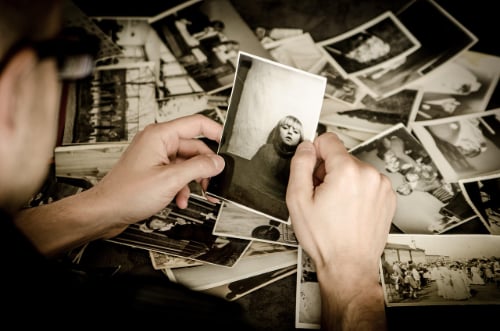
Categories

Click to Get Big Benefits
-
Best Canvas Prints

-
Order Canvas Prints

-
Order Framed Photos

-
Canvas Pictures From Photos

-
Metal Prints Online

-
Fast Canvas Prints


The Weight of What We Can Touch
Photo printing bridges the gap between the virtual and the visceral. A digital image might live on a phone, but a printed photo demands attention. It sits on a shelf, hangs on a wall, or tucks into a wallet, becoming a tactile reminder of moments that matter. Unlike a swipeable image, a printed photo carries texture—the gloss of a wedding portrait, the matte finish of a landscape, or the frayed edges of a Polaroid. Photo printing reintroduces us to the sensory joy of memory-keeping, where moments aren't just seen but felt.
A Counter to Digital Ephemerality
Scrolling through photos can feel like skimming a never-ending story. Photo printing, by contrast, forces curation. Choosing which memories to print—a child's first steps, a sunset from a dream trip, a candid laugh among friends—becomes an act of intentionality. These selections transform into anchors, grounding us in what truly resonates. In a culture obsessed with capturing everything, photo printing teaches us to prioritize quality over quantity, preserving only what deserves permanence.
The Unseen Power of Presence
Printed photos don't just exist—they live with us. A framed print on a desk silently narrates a personal history; a photo album passed around a dinner table sparks conversations no smartphone gallery can replicate. Photo printing turns images into heirlooms, objects that outlast devices and platforms. They survive app updates, server crashes, and forgotten passwords, becoming timeless vessels of legacy.
The Ritual of Slowing Down
Photo printing is an antidote to instant gratification. The process—selecting images, choosing paper, waiting for prints—invites reflection. It's a deliberate pause in a world of rapid-fire sharing, a chance to ask: Is this moment worth holding? This ritual redefines photography from a habit of accumulation to one of meaning-making.
Why Now? The Human Need for Anchors
As digital fatigue grows, people crave tangible proof of their lives. Photo printing answers this need, offering something algorithms can't: irreplaceability. A printed photo can't be filtered, edited, or deleted. It's flawed, fixed, and unapologetically real. In an era of curated personas, these imperfections become their own kind of beauty—reminders that life isn't meant to be polished, but lived.
Conclusion
The return of photo printing isn't a step backward; it's a reclamation of authenticity. It acknowledges that memories aren't truly ours until they exist beyond the glow of a screen. In printing our photos, we're not just preserving moments—we're declaring that some things deserve to endure.After all, the best memories aren't those we store—they're the ones we touch, share, and return to, time and again. Photo printing doesn't just capture light; it gives memories a heartbeat.

All News
- Insurance
- Finance & Loan
- Cars & Bikes
- Furniture
- Dentistry
- Hair&Beauty
- Lawyer
- Life Services
- Health & Life
- Education
- Shopping
- Jobs
- Technology & Energy
- Digital Technology
- Software Technology
- Pets
Others
- Terms of use
- Contact Us
- Privacy Policy
